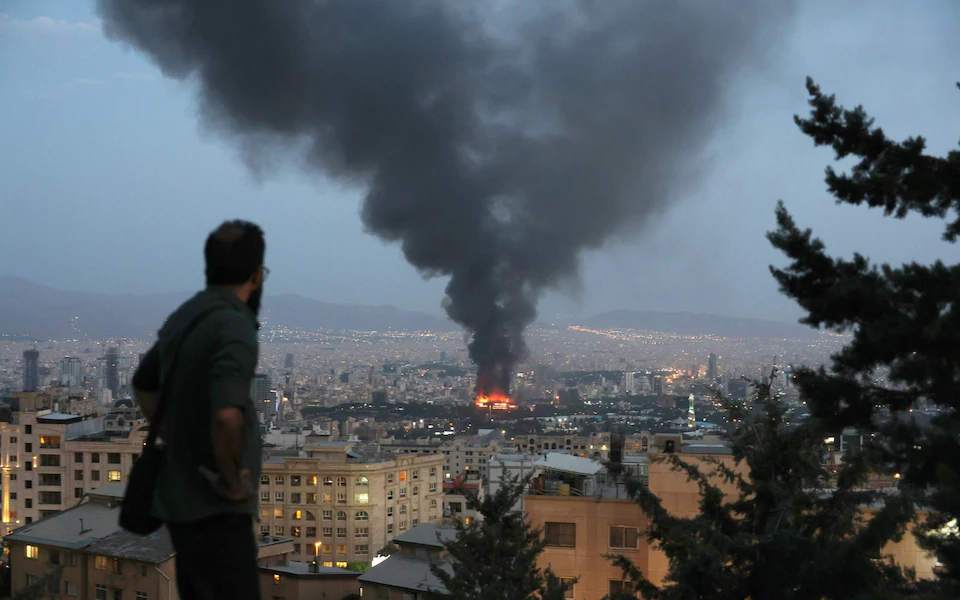Tensions in the Middle East have surged to unprecedented levels following Iran’s retaliatory missile strikes on U.S. military positions. According to reports from The Irish Times and The New York Times, Iranian ballistic missiles targeted the Al Udeid Air Base in Qatar and triggered air defense systems at the Ain al-Asad base in Iraq—both key U.S. strongholds in the region. These strikes come just days after U.S. forces carried out heavy air raids on three of Iran’s nuclear facilities.
Shortly after the Iranian assault, explosions echoed across Doha, prompting Qatari authorities to temporarily close the nation’s airspace. The Ministry of Foreign Affairs cited the need to ensure the safety of residents and visitors, leading to widespread disruption of air travel. Qatar Airways and other carriers began rerouting flights, with some diverted mid-air due to the unfolding crisis.
Coordinated Attack with Minimal Casualties Iran’s strike was reportedly coordinated with Qatari officials in advance—a strategic move to avoid mass casualties. The New York Times reported that Iran gave prior notice of the attack, allowing for precautionary measures. Iranian state television broadcast the news to martial music, calling the strike “a mighty and successful response by the armed forces of Iran to America’s aggression.”
The Al Udeid base, which hosts U.S. Central Command’s headquarters and rotating British military personnel, has been closely monitored by Washington. While the full scale of the damage remains unclear, satellite images suggest that much of the aircraft fleet had already been repositioned, likely reducing the impact.
White House Response and Diplomatic Fallout In response, the White House issued a measured yet firm warning. Press Secretary Karoline Leavitt stated that the U.S. military posture had not changed, but emphasized that any further Iranian aggression would be met with “a force far greater” than the initial U.S. strikes.
President Donald Trump stoked further tension by suggesting the Iranian people might rise up against their government. “Why shouldn’t the Iranian people stand against a brutal terrorist regime?” he asked, although Leavitt later clarified this was a rhetorical statement, not a call for regime change.
Meanwhile, Iranian Foreign Minister Abbas Araqchi held high-level talks with Russian President Vladimir Putin in Moscow. Kremlin spokesperson Dmitry Peskov confirmed that both sides discussed ways to de-escalate and promote a peaceful resolution to the regional crisis.
Read Also:
UK on high alert as Iran threatens retaliation following US strikes
US lobby China to stop Iran from closing strait of Hormuz
What we know about Trump bombing of Iran’s nuclear sites
Security Implications and Global Repercussions The conflict has rattled international stakeholders. The UK Foreign Office issued an updated travel advisory urging British nationals in Qatar to “shelter in place” and avoid all travel to Iran. Of significant concern is the Strait of Hormuz, a crucial conduit for 20% of the world’s oil supply. Any disruption there could destabilize global energy markets.
U.S. officials have warned Tehran that closing the Strait would be a “foolish” move with dire economic consequences. Energy analysts are already predicting a rise in oil prices, while airlines and shipping firms assess risks and reroute accordingly.
Adding a moral dimension to the crisis, Pope Francis condemned the recent U.S. strikes and called for both sides to show restraint, warning of an “irreparable chasm” if diplomacy fails.
What Lies Ahead? American intelligence agencies believe Iran may conduct additional retaliatory strikes within the coming days. Analysts caution that if current trends persist, the conflict could spiral into a broader regional war—bringing severe humanitarian and economic consequences.
As global powers call for calm, the international community is left watching and waiting, hoping that diplomacy can prevail before it’s too late.
Stay with New Daily Prime for verified, real-time updates on this rapidly developing situation.



